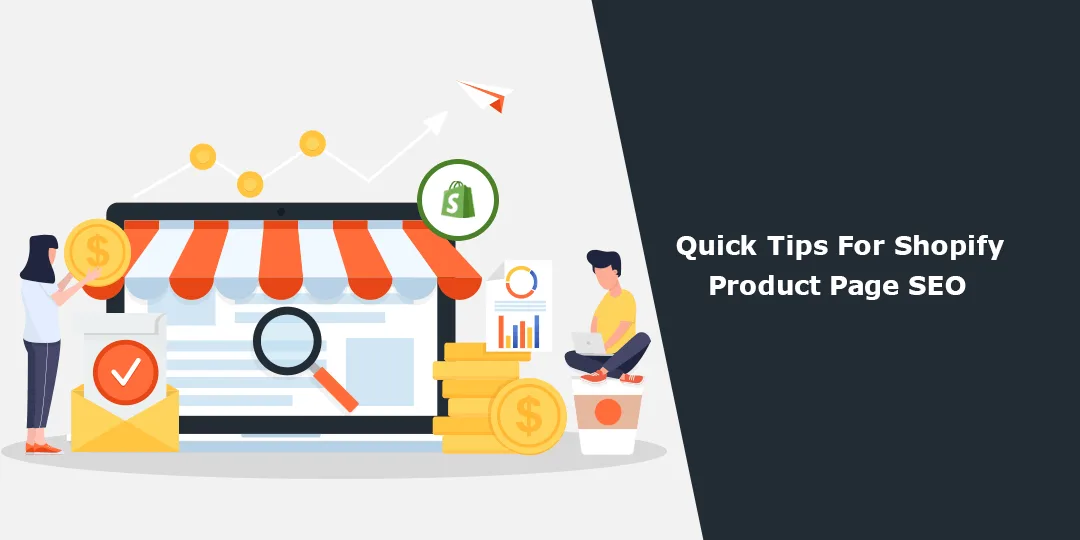Customer attention is the most important key factor in making a Shopify business store successful. No matter how amazing products or services a business sells, it is useless if it fails to attract customers to the Shopify store. That is why investing in the most important component of the digital market, Search Engine Optimization (SEO), has become crucial.
Optimizing a Shopify store involves various aspects, such as using a suitable theme to ensure quick page loading and providing an enjoyable user experience with easy navigation. Nonetheless, business leaders often commit a significant error by concentrating solely on optimizing blogs, home pages, and landing pages while neglecting product pages.
Shopify product pages are as important as the other CMS pages that need to be optimized and ensure that Google index and rank them in the search engine results.
What Should You Know About Shopify Product Page SEO?
No Shopify admin must forget that the product pages are also a part of their website. We know the basics of SEOs, on and off-page and technical SEO. If you have done technical SEO of your website, you can be relieved as your website will rank on search engines shortly, but the online shopping experience is important, too. Hence, you need to have your on-page SEO done ASAP.
Product page SEO involves a range of factors like crafting compelling product descriptions that accurately convey the key features and benefits of the item, optimizing title tags to ensure they are both informative and attention-grabbing, creating clean and concise URLs that are easy for both users and search engines to understand, and optimizing metadata to help search engines understand the content of the page and improve its visibility in search results.
Recommended Read
Quick Tips to Conduct Shopify Product Page SEO
Shopify product page SEO is lengthy, as incorporating keywords in the content is insufficient. Multiple things go into creating a product page, making it important for admins to constantly optimize the pages and enhance the product descriptions and other product page components, ultimately helping with improved user experience.
1. Focus on Buyers instead of Search Engines
Product descriptions are the foremost things chosen regarding product page SEO. Optimizing product descriptions is undoubtedly the easiest task, but in today’s advancing digital world, you must write for your customers, not search engine crawlers.
When creating product descriptions, it’s important to consider portraying the actual benefits of your product rather than just incorporating keywords. Avoid only listing features; instead, elaborate on how your product’s different components will improve your customers’ lives.
2. Go Deep With Keyword Research
Every Shopify marketing expert will blabber the same: “Keywords are the most important factors of SEO.” Unfortunately, many Shopify admins struggle to find and incorporate the appropriate keywords into their product page content. Regarding product pages, the focus should not be solely on high-traffic or high-volume keywords.
Focus on using specific keywords more likely to attract customers ready to purchase. Long-tail keywords that are highly targeted tend to be more effective than broad topics.
For example, using the keyword “running shoes for women” would be more beneficial than simply using “shoes.” This approach ensures that you attract customers who are more likely to convert into buyers rather than just browsing for information.
3. Use Keywords Appropriately
The previous point explained how important keyword research is. So, once you have researched your business-appropriate keywords, it’s time to incorporate them correctly into your product page content. Incorporating them into page content is no rocket science. Just follow a simple thumb rule;
- In product page URLs (if possible/where needed).
- In product descriptions.
- In ALT tags of product images
When creating SEO-optimized product listings, it’s important to use your keyword once or twice in the product description, but avoid stuffing too many examples of the term into a short space. Keep things simple and highlight the benefits of your products to customers. Also, use terms that people will be searching for.
Recommended Read
4. Develop Content That Drives Customer Awareness
Determining the correct content quantity is the biggest hurdle business leaders must encounter while conducting product page SEO. But thanks to Shopify, it gives satisfactory freedom to admins to experiment with the product description length and other components.
When creating content for your website, it’s best to keep it concise and to the point, especially if you have a lot of customers who access your site on mobile devices. The amount of content you include on each page should vary based on the level of knowledge your buyers have about your products or services.
For example, if you’re selling a product that’s uncommon or distinctive and may not be immediately understood by potential customers, consider including detailed descriptions and videos. However, if you’re selling something that most people easily recognize, it’s best to avoid including an excessive amount of information.
5. Find More Ways for a Better User Experience
User experience and SEO go parallel to each other. Advanced search engines also look for better user experience components, like lower bounce rates, reduced cart abandonment rates, etc. Thus, you need to look for ways to enhance your user experience and streamline customers’ shopping and browsing journeys so that search engines rank your website on SERPs.
Try including;
[A] FAQs
It’s a good idea to include some frequently asked questions on your product pages and a dedicated FAQ page on your website. You can make an expandable list on your store, where customers can simply tap on the question to get a quick answer. Consider your customers’ questions before purchasing, and include those in the list.
Recommended Read
[B] Social Proof
It’s good to provide your customers with credibility evidence, as it will help you gain more customer trust. According to studies, product pages that feature customer reviews have a 52.2% higher conversion rate. Consider adding a carousel of user-generated content and reviews to your pages to enhance your products’ perceived value and trustworthiness. Additionally, displaying any relevant accreditations or certifications your products have achieved can further establish your credibility.
To know more
[C] Attractive Visuals
A major disadvantage of online shopping is that customers cannot physically touch or see the product before purchasing it. To compensate for this, providing customers with more visual content is important. This can be achieved by sharing product photos from various angles, including alt tags, and using videos to offer a 360-degree view of the sold item.
Optimize your Product Page
Shopify product page SEO can benefit your business in several ways: attracting new customers, increasing store traffic, boosting sales and revenue, enhancing customer user experience, and many more. Once again, SEO is not a one-night thing, but its results are worth the patience.
You need to create pages that attract search engines and actively engage customers; failing to do so will result in missed opportunities to reap the benefits.
If you require assistance creating SEO-optimized and user-friendly Shopify stores, contact the MageComp team today.
Our team of Shopify experts can guide you in building an extraordinary store, from designing themes to executing marketing strategies.
Happy Shopifying!!!










